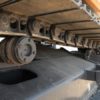Getting the Most Out of Your Warranty

A warranty is defined as a written guarantee, issued to the purchaser of a machine by its manufacturer, which ensures the repair or replacement of components that are defective in material and/or workmanship within a specified period of time. Warranties are touted all across the industry, but the subject of warranty requirements and how to protect your coverage is something that isn’t discussed as often as it should be.
Anyone who owns a piece of equipment or manages a fleet needs to be well informed on the subject of warranty. Our goal here is to provide you with a basic understanding of what to look for and how to prepare to get the most out of your equipment warranty.
The Evolving Warranty Landscape
There are four things that have really changed the dynamics of warranty over the years: telematics, electronics/fault codes, longer warranty periods and emissions standards.
- Telematics
Telematics has completely changed the landscape with respect to warranty as it has become more and more prevalent in construction equipment. Telematics systems can allow you to be much more efficient in maintaining and servicing your equipment, but it can also monitor actions and behavior that can void warranty. - Electronics/fault codes
Fault codes play into that same concept. Today’s advanced machines are filled with electronic sensors that help govern the engine, hydraulics and other systems. They also generate fault or error codes whenever something goes wrong. Basic diagnostic software can now tell how many times the oil pressure was dropped by working on an incline, or how many times the air filter light came on before it was actually replaced. - Longer Warranty Periods
Today, more and more manufacturers are offering longer warranty periods. There is a great deal of satisfaction in knowing that your equipment will be covered for a longer period of time, but this also creates greater responsibility for the owner. The longer the warranty period is, the more it becomes the owner’s responsibility to make sure that they are maintaining the integrity of the warranty plan. - Emissions
Emissions warranty has actually been around since the 1970s, but it has become more important with the development of today’s Tier 4 emissions requirements. As a simple example, back then a fuel injector may have only cost $75.00, so you’d buy one, have it installed and be on your way. Now, modern diesel engines with advanced after-treatment systems are more complex and have additional components. That same fuel injector may now cost upwards of $2,000.00 and there may be four or six of them in the engine—the technology that is involved and the cost of the components requires owners, fleet managers and operators to be more vigilant than ever.
Types of warranty
There are three basic types of warranty: factory warranties, emissions warranties and extended service warranties. Let’s take a look at each warranty type.
- Factory Warranty
The terms of a factory warranty are typically outlined in a document issued by the manufacturer referred to as the Warranty and Limitations of Liability. This is generally considered a legal document, and outlines the responsibilities of the manufacturer, dealer and customer.Most modern equipment manufacturers will provide the purchaser with a Warranty and Limitations of Liability document that clearly defines what is covered, what is not covered, outlines the rights of the equipment purchaser, and clearly defines the responsibilities of all parties involved.
It is important for owners and fleet managers to have a strong understanding of the factory warranty on a piece of equipment, so be sure to ask plenty of questions when discussing a new equipment purchase with your dealer. Is the warranty transferable? What is covered by the warranty?
Under what circumstances are oils and fluids paid? What is excluded from the warranty? Also be sure to ask about required service intervals, wear items and other components such as lights, batteries, tires and tracks.
Another thing to consider when it comes to factory warranties is that, in many cases, the operator who is ultimately responsible for the equipment isn’t the person who wrote the check. It is important for owners and fleet managers to discuss the terms of a factory warranty with their operators in order to protect their equipment investment.
- Federal Emissions Control Warranty
Manufacturers have been required by federal law to provide emission control coverage for vehicles since 1972. Federally required emissions control warranties protect an equipment owner from the cost of repairs for certain emissions-related failures resulting from manufacturer defects in materials and/or workmanship that cause your equipment to exceed federal emissions standards. This warranty covers 2 years or 1,500 hours of operation, whichever occurs first, for engines less than 19kW/25HP, or 5 years or 3,000 hours of operation, whichever occurs first, for engines greater than or equal to 19kW/25HP.It’s important to understand how the advent of Tier 3 & 4 emissions requirements have changed the dynamics of warranty over the years.
The primary impact on emissions warranty and whether a failure qualifies for warranty coverage comes from the operator following the correct guidelines in the operator’s manual. For example, machines with DPFs (Diesel Particulate Filters) require “regeneration” cycles at the proper intervals, and emissions systems that use DEF (Diesel Exhaust Fluid) require the fluid to be properly handled—and of good quality—and to be topped off properly.
Also, the quality of fuel and filtration has become more important than ever. The fuel system—including DEF components where applicable—is the only system on a machine that has foreign material introduced into it everyday. There are many risks involved with using poor quality and/or improperly handled fuel that can have an adverse affect on emissions warranty coverage.
As you can see, the advanced technology involved, as well as the high cost of today’s diesel engine components, requires owners and operators to be very vigilant.
- Extended Service Warranty (3rd party)
Extended warranties generally don’t cover the same components and materials as a factory warranty, and there are often many more exclusions, so it is best to be as informed as possible when purchasing an extended warranty. Most extended service warranties allow the purchaser to pick and choose what is and is not covered, so be sure to talk to your equipment dealer about it and be as well informed as possible throughout the process.If a machine is no longer covered by its factory warranty, you don’t want to be left on your own. With today’s advanced electronic and hydraulic systems, many parts and components can carry a much higher price tag than they may have in the past. Also, many systems require special diagnostics and other tools, so you want to make sure that you’re covered in the event of a failure.
Warranty responsibility – Manufacturer, Dealer, Owner
No one person or department is ultimately responsible when it comes to warranty. Everyone associated with a piece of equipment is responsible—from the assembly line worker at the factory, the person who sets up of the equipment at the dealer, to the customer’s delivery person. Here is an outline of the responsibilities of the manufacturer, the dealer and the owner.
- Manufacturer
The manufacturer is responsible for delivering a unit free of defects in material and/or workmanship, as well as providing a Warranty and Limitations of Liability document that clearly defines what is and is not covered. They are also responsible for providing product support to their dealers, providing support for dealer warranty repairs, providing service information and training, as well as identifying product deficiencies and taking corrective action in the form of recalls, product improvement programs, etc. - Dealer
The dealer is the key conduit between the customer and the manufacturer, so they are responsible for making sure that the purchaser understands their warranty coverage. They are also responsible for providing product support and service for warranty repairs on behalf of the manufacturer, as well as having a strong knowledge of the manufacturer’s policies and procedures. - Owner
The owner is responsible for making sure that all maintenance procedures are completed at the required intervals at a minimum, as well as following all manufacturer recommendations in regards to all fluids, oils and filters.The operator’s manual provides key information regarding service intervals, however one needs to also take into account the application and environment in which the machine is working. Certain applications may have a considerable impact on warranty coverage (see section below).
It is also the responsibility of the owner to report defects in a timely manner to the dealer, as waiting to report an issue may have negative consequences for both the machine and the warranty coverage. Your dealer will advise you as to whether the condition is detrimental to the equipment if operation is continued.
It is important to remember that warranty repairs must be performed during the warranty period. Even if a machine is running properly for the time being, delaying a repair until the job is done and the warranty period is over will result in the repair not being covered.
Additional topics impacting warranty
Now that we’ve outlined the different types of warranties and the responsibilities of the parties involved, let’s take a closer look at the many different criteria that can impact your warranty coverage. For the sake of this article, we’ll break it down into five categories: applications, modifications, maintenance, telematics/electronics and operating practices.
- Applications
Certain applications may have considerable impact on warranty, such as demolition work, recycling/scrap handling, forestry and other heavy duty, high-impact applications. There is nothing wrong with these applications—it is all part of doing business—but the problem arises when the machine is not set up properly for the application it is working in.As an example, when working with heavy duty hammers, breakers and other attachments, it may be required by the factory warranty that the machine be upgraded with an available heavy duty package in order to work in certain applications. It is also very important that any attachment be properly matched to its carrier.
Be sure to ask your equipment dealer how certain applications and attachment usage can affect maintenance intervals. The information should be available through the attachment manufacturer.
- Modifications
Most machine modifications will void a factory warranty—this is especially true when the modification requires any type of welding. This could mean modifying a bucket for increased capacity, utilizing attachments such a thumbs that are not suited for the size/type of machine, additional counterweights or improper installation of certain attachments. Certain modifications can be done to a piece of equipment, but it is the responsibility of the owner to have an understanding of what is and is not allowed under the warranty agreement.Remember that welding on equipment without disconnecting the battery may result in severely damaging electronic components on the machine.
- Maintenance
The operator’s manual is the key to all maintenance intervals and requirements, and your dealer should be an excellent resource for ongoing updates on maintenance criteria.Be sure to follow all manufacturer recommendations for fluids and filters. As heavy equipment has become more technologically advanced, machine tolerances have changed drastically over the years and many components require tight fluid specifications in order to run properly. For example, axles with limited slip, transmissions with different clutch pack material, hydraulic components (increasing pressures, reduced capacity, etc.).
Engine Coolants require particular attention. For instance, OAT (Organic Acid Technology) coolants—which we have seen in the automotive market, and are now being adopted by off highway equipment—are NOT compatible with other forms of coolant, and will ruin a cooling system and void warranty.
Fluid analysis programs are also highly recommended and can go a long way in diagnosing and preventing costly equipment failures. While analysis may not prevent a failure due to defect in material and/or workmanship, it can most certainly help minimize the extent of a failure and ultimately reduce downtime.
- Telematics/electronics
Telematics has become an integral component of maintenance and failure analysis. For example, if a transmission fails, the transmission control unit may indicate that the transmission was overheated multiple times—this information could play a role in whether or not the failure will be covered under the warranty, partially depending on your service agreement with the dealership.In addition, the advent of electronic devices used on modern machines such as ECM, TCM, ECU, etc. means that virtually all electronic devices on a piece of equipment will store error/fault codes which can be retrieved through diagnostic software.
- Operating practices
Proper operating practices and techniques will also have an impact on warranty coverage, as the combination of component wear, telematics data and electronic diagnostics will easily be able to tell the difference between a smooth operator and a “bucking bronco.”Above all, your operators need to be properly trained and well informed. They need to be trained on the proper operating techniques, and need to know what to look for during daily inspections. Tier 4 emissions regulations have changed the daily routine maintenance requirements for most new machines, so it is important for operators to have an understanding of the different types of after-treatment systems and the maintenance practices associated with them.
A well-trained operator will want to limit downtime—they’ll recognize issues early on, provide feedback and let the owner or fleet manager know if something doesn’t feel right. They’ll also limit unnecessary idling. Excessive idling not only wastes fuel, but it also adds unnecessary wear to the machine and wastes factory warranty. 30 percent idling over a 3000-hour warranty life amounts to 900 operating hours wasted. It adds up.
Remember, the operator is the eyes and ears of the equipment, and they are responsible for the day-to-day maintenance and activities of the machine, so the best way to make sure that you are getting the most out of your equipment warranty is to be sure that they have the right training, are well acquainted with the operator’s manual and that they are properly informed about the capabilities and limitations of the equipment.












